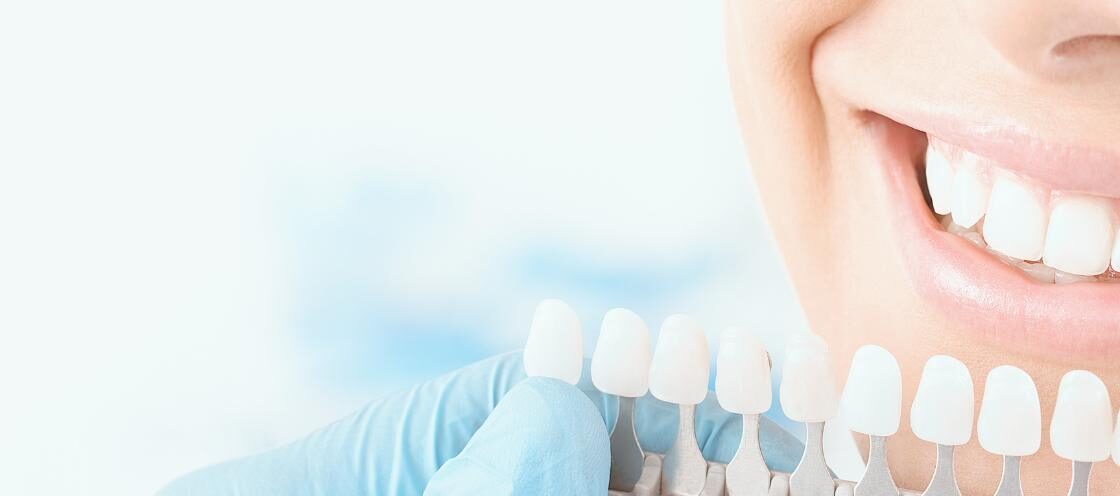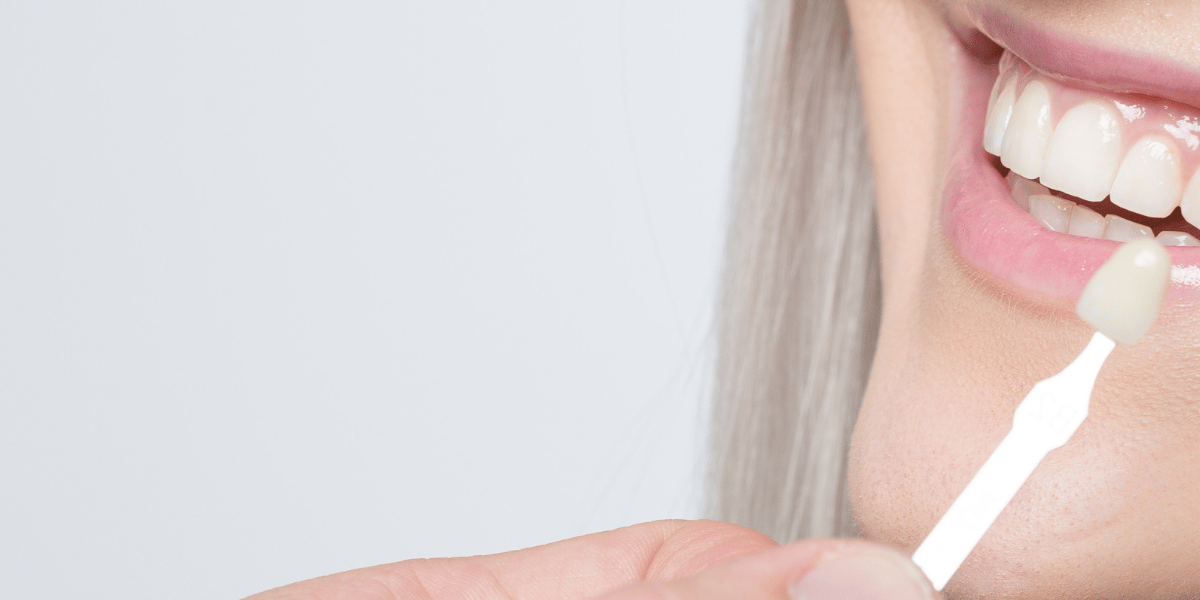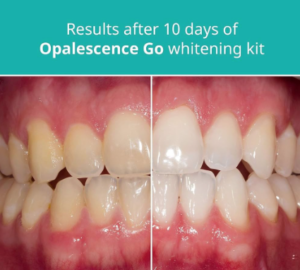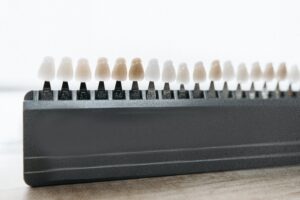Teeth Whitening vs Veneers: Which is Best For You?
A captivating smile is an indispensable asset. A radiant smile will enhance your elegance and refinement. It boosts your confidence and leaves a lasting impression. Inform yourself of the differences in procedure between teeth whitening vs veneers comparatively before brightening your smile.
The Ancient Egyptians were amongst the first to use a teeth-whitening formula made from a blend of pumice and wine vinegar. This showcases an early fascination with achieving a brighter smile, albeit as a status symbol. Along with improved dental hygiene practices, our teeth have consequently naturally evolved to be whiter over time. This is attributed to a shift away from a diet high in pigmented food and drinks known to stain teeth, specifically red wine, berries, pomegranates, and certain spices.
The choice between teeth whitening vs veneers is an important one, specifically when you upgrade to a brighter, whiter smile. Though, which is the best option for you?
Presently, let us explore these cosmetic dental procedures in the following guide. We will compare their merits and help you make an informed decision that complements your refined lifestyle.

The Basics: Teeth Whitening vs Veneers
It is important to firstly mark the difference between the procedures of teeth whitening vs veneers. We will also compare at-home teeth whitening kit usage with professional teeth whitening procedures.
In the world of luxury and refinement, a radiant smile isn’t just an accessory; it’s also a statement. It possesses the ability to transcend words and express emotions with confidence and charisma. Equally, this applies to personal day-to-day interactions and professionally as they relate to business etiquette.
Maintaining good skincare habits, like using sunscreen that doesn’t clog pores, helps preserve glowing skin. Furthermore, choosing the right cleanser, such as the Murad Clarifying Cleanser (that I’ve reviewed here), is equally important, just as a bright smile enhances your overall look.
Before we dive into the specifics of teeth whitening vs veneers, furthermore we will define what each procedure entails.

Teeth Whitening
Professional teeth whitening is a cosmetic dentistry procedure that involves the use of a hydrogen peroxide-based solution to lighten the colour of your teeth.
We will now explore how the procedure works and common ingredients used.
Teeth whitening procedures carried out in a dental office achieve the best results under professional supervision.
The mechanism behind teeth whitening is the application of a bleaching agent. The primary active ingredient is usually a hydrogen peroxide (H2O2). Likewise, this tends to be present in both professional and over-the-counter gels. Additionally, hydrogen peroxide is a powerful oxidising agent because it penetrates the enamel to break down and remove stains. It exists in various concentrations, ranging from 10% to 35% in professional treatments.
Additonally, thickening agents like carbopol or glycerin are commonly used. These give the gel its consistency and help it adhere to the tooth surface during application. Some gels may contain desensitising agents, like potassium nitrate or fluoride. These can help reduce tooth sensitivity, a common side effect of teeth whitening.
Overall, teeth whitening can brighten your teeth by 5-10 shades, providing a noticeable improvement. However, it is important to note that teeth whitening, while effective, is not a permanent solution. Thus, the results can last from several months to up to a year or more.
The length depends on lifestyle factors and post-treatment care. Still, regular dental visits and proper care are imperative for maintaining your newly whitened smile.

Dental Veneers
Dental veneers, also known as porcelain veneers, are a different approach to achieving a captivating smile.
These custom-made, ultra-thin shells are crafted to cover the front surface of your teeth. Subsequently, they effectively conceal imperfections and create a flawless smile.
Dental veneers often include composite resin. This is a ‘tooth-coloured’, durable material used to improve the appearance of teeth by addressing issues such as discolouration, chips, or misalignment.
Furthermore, the procedure often involves multiple appointments discussed in the next section.

Teeth Whitening vs Veneers: Procedural Comparison
Make your decision between teeth whitening and veneers carefully.
Consider the following various factors to ensure your chosen option aligns with your smile goal, as well as the high standards of refinement that you seek.
Professional Whitening vs. At-Home Teeth Whitening
Safety and effectiveness are paramount, particularly when it comes to teeth whitening.
Notably, dentists use professional teeth whitening brands and products. These are designed to provide safe and superior results, especially compared to at-home treatments that can present higher risks. Now, view the comparisons outlined in the below table:
| Feature | At-Home Teeth Whitening | Professional Dental Teeth Whitening Treatments |
SPEED OF RESULTS | At-home teeth whitening treatments can deliver varied results. They may not be as fast or consistent as professional dental whitening. | Immediate Results: In-office professional teeth whitening provides fast and noticeable results, often in a single appointment. This ensures that the process is efficient and effective, together with minimal risks. |
| COST | Usually less costly. | More expensive. |
DAMAGE | Potential for increased damage to the protective enamel: Enamel coats your teeth as a remarkable defence against tooth decay and sensitivity. Once it is compromised, it does not regenerate. Overly-frequent and improper use can lead to enamel erosion, resulting in heightened sensitivity and even irreversible damage. | Protection of Enamel: Professional teeth whitening treatments are designed to protect the enamel whilst effectively removing stains. The risk of enamel damage is lower compared to some at-home treatments that may not be as carefully regulated. |
QUALITY OF AGENTS | Harsh bleaching agents: Some at-home kits may contain harsh bleaching agents at concentrations that are too potent for safe use without professional guidance. | High-Quality Whitening Agents: Dentists use professional-grade whitening gels and materials that are proven to be safe and effective. These products are often gentler on the teeth and gums, whilst delivering superior results. |
REGULATION | Lack of regulation; potentially unsafe. | Dental procedures regarding teeth whitening and veneers are typically regulated and governed by state dental boards in the U.S. (or other body within a particular jurisdiction). Moreover, professional dental whitening treatments adhere to the standards and guidelines set by the relevant dental associations that prioritise patient safety, care, and optimal results. By opting for professional whitening under their guidance, you can trust that their treatment is administered by qualified and licensed professionals. |
CONCENTRATION SAFETY | High concentrations and harmful effects: Many at-home teeth whitening kits lack proper regulation. The concentrations of whitening ingredients can vary widely. In some cases, these concentrations are considerably high, sometimes exceeding 40%. While such high concentrations may accelerate the whitening process, they in fact also heighten the risk of enamel damage and adverse side effects like extreme tooth sensitivity and gum irritation. In severe cases, some may even chemical burns on the soft tissues of your mouth. | Careful concentrations: In general, professional teeth whitening products used by dentists are formulated with a balanced approach. Typically, they use hydrogen peroxide or carbamide peroxide in concentrations between 15% and 35%. Moreover, these concentrations are carefully calibrated to provide effective results whilst minimising risks to the enamel and oral tissues. Additionally, dentists can also adjust the concentration of the whitening agent and use desensitising products to ensure a comfortable experience. |
SUPERVISION | No supervision. | Professional Supervision: Professional teeth whitening is administered by trained dental professionals who monitor the process closely. This reduces the risk of complications and ensures safety throughout the treatment. |
POST-PROCEDURE CARE | No post-procedural care (or potential frequent treatments on a whim). | Customised Treatment Plans: Dentists assess each patient’s oral health and individual needs to then create a personalised treatment plan. As a result, this level of customisation ensures that the whitening process is both effective and safe. Long-Term Monitoring: Notably, dentists can provide guidance on post-whitening care and monitor your oral health. This consequently ensures that the results are maintained and any potential issues are addressed promptly. |
In the pursuit of a dazzling smile, at-home teeth whitening kits may seem like a tempting and budget-friendly option.

Editor’s Tip
In light of the potential dangers and risks, The Redefined Feminine thereby recommends professional dental treatments over the economic temptation of inexpensive at-home teeth whitening kits.
The price of a quick fix pales in comparison to the potential, irreversible long-term cost to your enamel and dental health.
Importantly, seek professional dental whitening treatments under the guidance of a licensed practitioner as the safest and most effective route to achieving a radiant smile.
Preserve the integrity of your enamel and oral health. Undoubtedly, your smile is a valuable asset that therefore deserves the expert care and attention that only a dental professional can provide.
Opalescence
The brand Opalescence is the global leader in teeth whitening products used in the dental industry.
Opalescence offers a range of whitening products, including take-home kits with custom trays and in-office treatments:


- Opalescence Teeth Whitening Gels:
- Opalescence offers a range of teeth whitening gels with varying concentrations of carbamide peroxide or hydrogen peroxide.
- Concentrations typically range from 10% to 35%, allowing for different levels of whitening intensity.
- Importantly, use the gels with the custom-made trays provided, thereby providing a customised and controlled whitening experience.
- Opalescence Go:
- Opalescence Go is a ready-to-use, disposable teeth whitening system.
- It comes in pre-filled trays with a gel containing either 10% or 15% hydrogen peroxide.
- Opalescence Boost:
- Opalescence Boost is an in-office, chemically activated whitening treatment performed by dental professionals.
- It uses a 40% hydrogen peroxide formula for quick and efficient results.
Obviously, dentists can tailor treatments to suit each patient’s needs and tolerance levels.
Dental Veneers: The Procedure
The veneers procedure typically involves a consultation, following two or more subsequent appointments:
Initial consultation

Assessment and shade selection
The initial assessment involves discussing your expectations, preferences, and concerns.
The dentist will assess the condition of your natural teeth and determine if veneers are the appropriate solution. X-rays may be taken to assess your dental health.
In addition, the dentist will explains the veneer procedure, including benefits, potential limitations, and different types of veneers (porcelain or composite) based on your needs.
Additionally, collaborate with the dentist to select the right shade based on your skin tone, facial features, and personal preferences. Account for your natural tooth colour and the desired level of brightness.
The dentist may use digital imaging or create temporary veneer mock-ups to show you potential outcomes. This helps in visualising the final result and also making informed decisions about your final shade.
First Appointment
Tooth Preparation

A small amount of enamel is removed from the front surface of the teeth receiving veneers (about 0.5 to 1.0 millimeters). Local anaesthesia ensures comfort during the procedure.
The removal of a small amount of enamel from the front surface of the teeth is a standard step in the process of getting dental veneers.
This involves numerous purposes as follows:
- Creates space for the veneer and ensures a natural appearance:
- The thin layer of enamel removed ensures that the veneer does not make the tooth appear bulky or unnatural once it is placed.
- The veneer bonds seamlessly to the tooth without altering the natural bite.
- Enhances Bonding Strength:
- The bonding process is more effective when applied to the tooth surface after enamel removal.
- Bonding directly to enamel provides a strong and durable attachment for the veneer.
- Allows for a Smooth Transition:
- The removal of enamel helps in creating a smooth transition from the natural tooth to the veneer.
- This ensures that there are no noticeable ledges or steps between the veneered tooth and adjacent natural teeth.
- Addresses Irregularities:
- Enamel removal allows the dentist to address any irregularities or imperfections on the natural tooth surface.
- It ensures a clean and uniform substrate for the placement of the veneer.
- Preserves Tooth Structure:
- Removing a small amount of enamel preserves as much natural tooth structure as possible.
- Veneer placement is a conservative approach that minimises the removal of healthy tooth material.

Dental Impressions
Your dentist will take impressions of your teeth.
The impressions, along with any imaging, are subsequently sent to a dental laboratory for skilled technicians to create your personalised veneers. The surface of the natural teeth is etched or roughened to create microscopic nooks and crannies.
Temporary veneers may be placed in the interim. Their purpose is to protect the prepared teeth and maintain aesthetics, whilst the final veneers are being crafted.
Veneer Try-In:
The dentist will correspondingly place the veneers temporarily to check for fit, colour, and the overall aesthetic. Make any adjustments at this stage to ensure a perfect fit.
Final Appointment

Chemical Bonding of Veneers
Another appointment will be scheduled to bond the veneers to your natural teeth.
During the chemical bonding procedure, each veneer is placed onto the adhesive-coated tooth. A curing light hardens the material. The adhesive forms a chemical bond with both the enamel and the resin, thereby creating a secure attachment. This results in an immediate and dramatic transformation of your smile.
Post-Placement Care
Follow-Up Appointment
In a follow-up appointment, the dentist will assess how your gums and teeth are responding to the veneers.
Make any necessary adjustments during this appointment.

Teeth Whitening vs Veneers: Choosing the Best Option
Consider the following various factors to ensure your chosen option aligns with your smile goals.
Appearance of Your Teeth

Temporary Whitening
Above all, professional teeth whitening is an excellent choice if your primary goal is to achieve a whiter smile with minimal alteration to your natural teeth. It is an effective way to remove surface stains caused by common culprits like coffee, tea, red wine, and tobacco. Whitening treatments typically deliver immediate results, and require just one or two dental appointments.
Stains, misalignments, and uneven texture
Conversely, dental veneers might be the better option if you have more complex cosmetic concerns. These may include intrinsic stains, misaligned teeth, or chipped enamel.
Veneers provide a complete smile makeover, addressing a range of aesthetic issues in a single procedure. In particular, they are well-suited to those who seek a perfect, ‘Hollywood-like’ smile.
Time, Price and Permanence: Teeth Whitening vs Veneers
Teeth whitening vs veneers
Professional teeth whitening is ideal if you are looking for a quick, effective solution and are comfortable with periodic maintenance. Moreover, the effects of whitening can last a long time, but they aren’t permanent. This will necessitate further teeth-whitening appointments for touch-ups to maintain your white smile.
Veneers, in contrast, offer a long-term solution to ensure your smile stays consistently radiant. The chemical bonding process during the procedure ensures that the veneers remain in place over the long term. The veneers will endure throughout everyday forces and stresses like biting and chewing.
Maintenance of Dental Veneers
Underneath veneers, natural teeth maintain their structural integrity due to the chemical bonding process and the reinforcement provided by the veneers’ composite resin. This material acts as a protective outer layer, effectively distributing forces and minimising stress on the underlying teeth. As a result, the procedure ultimately ensures the long-term stability and good condition of the natural teeth.
When well-maintained and properly cared for, dental veneers can last anywhere from 10 to 15 years or even longer. However, the longevity of veneers also depends on factors such as oral hygiene and diet. Obviously habits like teeth grinding can affect their wear and tear.
Broadly speaking, veneers require minimal upkeep beyond regular oral hygiene and check-ups to monitor their condition. Thus, they align seamlessly with a refined and low-maintenance lifestyle.

Consult a Dental Professional
Guide your choice between teeth whitening vs veneers by a dental professional.
Your local cosmetic dentist can evaluate your specific needs and the condition of your teeth, providing personalised advice to help you make the best decision.
The American Dental Association also recommends consulting with dental professionals to ensure that your chosen treatment aligns with your dental health and overall well-being.
Regardless of the treatment option you choose, maintaining excellent dental hygiene is paramount. Consistent care and regular dental check-ups are vital for the long-term health and aesthetics of your teeth.
Be aware, however, that abrasive toothpaste and poor dental hygiene can affect both teeth whitening and veneers. Poor care can potentially lead to complications, including gum disease or tooth decay. Prioritise proper care to preserve the beauty and health of your smile.
The Final Verdict
In conclusion, when deciding between teeth whitening vs veneers, consider your smile goals, the condition of your teeth, and your preference for permanence. On one hand, professional teeth whitening is an effective way to achieve a whiter smile quickly. Meanwhile, dental veneers offer a more permanent solution and a complete smile makeover.
Consulting a dental professional is a most favourable course of action. After all, they can provide personalised guidance based on your specific needs. Remember that maintaining proper dental care is vital, regardless of your choice. Your smile is an asset worth investing in.
Ultimately, make a decision that best aligns with your smile goals, timeline, budget constraints, and ideal level of permanence. Always maximise your safety whilst resonating with your vision of elegance.
Taking care of your teeth is as important as maintaining neat nails and well-groomed hair to look polished and sophisticated. Read more about how to perfect these habits in our grooming tips for elegant women.

Leave A Comment